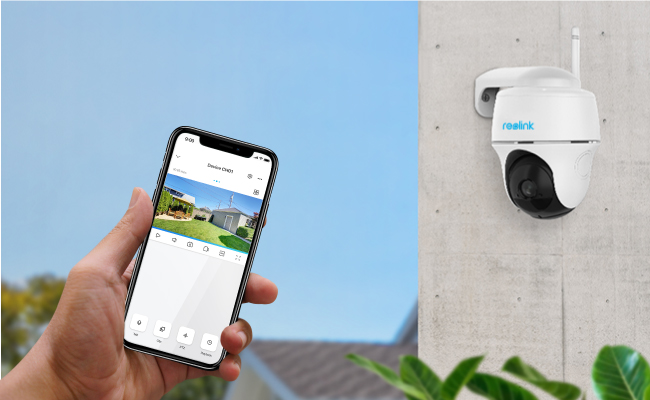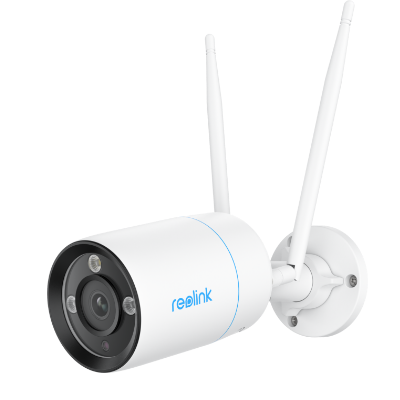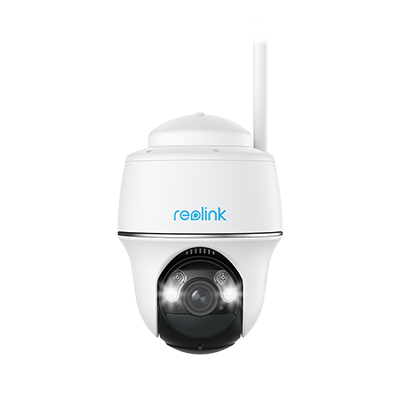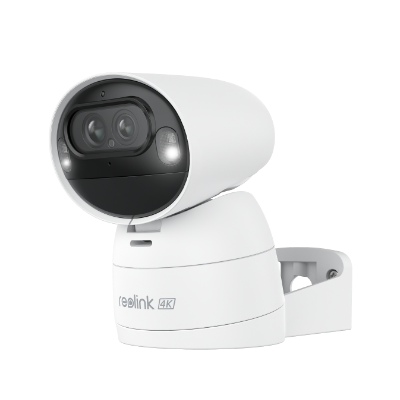Home security is a top priority for many homeowners who want to protect their property and loved ones. Security cameras are an effective way to monitor for intrusions or incidents. While old-fashioned wired cameras can be limiting to install, modern wireless cameras offer flexible positioning with less hassle.
From sleek indoor mini-cams to rugged outdoor models, wireless security cameras utilize the latest advancements like mobile connectivity, crystal clear 4K definition, night vision, and smart motion sensing. Let’s take a look at how do wireless security cameras work.
How Does a Wireless Security Camera Work?
Wireless security cameras work by transmitting video and audio signals via radio waves (Wi-Fi signals). These cameras capture data and send it to a receiver, which can be an NVR/DVR, a computer, or an app on a smart device. The stored data can be accessed conveniently through the same device from anywhere with Internet connection.
A wireless security camera connects to your home Wi-Fi network to transmit video without the need for cables. It contains several key components, including a lens, image sensor, processor, memory card, and Wi-Fi antenna.
The lens focuses light onto the image sensor, which captures video much like a digital camera. Common image sensors include CMOS and CCD. The sensor contains millions of light-sensitive pixels that convert photons into electrons to represent images.
The images are then processed by the camera's onboard chipset, which encodes the video into a compressed digital format like H.264 or H.265 to conserve bandwidth and storage space while maintaining quality. Image processing features like motion sensing, facial recognition, digital zoom, and night vision are also handled on the integrated circuit board.
Video is temporarily archived on a removable microSD card slotted into the wireless camera before it gets transmitted over the home WiFi network. Local storage acts as a backup footage source in case of internet outages. Some cameras support up to 512GB cards for weeks of 24/7 recording.
How Do WiFi Cameras Work?
WiFi security cameras leverage your existing home wireless network to deliver video. They broadcast over 2.4GHz or 5GHz frequencies via the 802.11 WiFi protocol, the same technology used for smart home devices and laptops. But how does a WiFi camera work exactly?
Plug-In WiFi Cameras
Plug-in WiFi security cameras connect directly to a power outlet, so you don't have to worry about changing or recharging batteries. They can operate 24/7 with continuous power. These cams also tend to offer higher video resolution and advanced features than battery-powered models.
For example, 4K wired cameras capture ultra-HD footage. However, plug-in WiFi cams have less flexible placement since they must be located near an AC outlet.
4K WiFi 6 Surveillance Camera
4K 8MP Ultra HD, Dual-Band WiFi 6, Color Night Vision, IP67 Waterproof, Smart Detection, Two-Way Audio, Built-in Siren.
Battery-Powered WiFi Cameras
Battery-powered WiFI cameras offer flexible, cable-free installation at any outdoor or indoor location within range of your home's WiFi router. For instance, you can mount one under the eaves or on a tree without needing access to power.
These wire-free cameras are portable and easy to reposition. Though battery life is limited, depending on usage, motion sensor technology preserves power by not recording nonstop. Solar options let you position cameras anywhere outdoors and recharge them via sunlight. So, this is how do WiFi security cameras work.
4k 100% Wire-Free PT Camera
4K 8MP Ultra HD; 5GHz/2.4GHz WiFi; Rechargeable Battery & Solar Powered; 355° Pan & 140° Tilt; IP65 Certified Weatherproof; Clear Night Vision; 2-Way Audio; 122° Wide Viewing Angle.
How Do Wireless Cellular Security Cameras Work?
Wondering how do cellular security cameras work? Cellular security cameras use 3G or 4G cellular networks to transmit video instead of WiFi. They contain an integrated SIM card that connects to nearby cell towers via mobile broadband.
While out of the typical home WiFi range, these wireless cameras can be positioned anywhere with cellular service. Video streams to your phone no matter where you are in the world via mobile data. Cellular cams are convenient but usually require a paid monthly service plan based on how much video is uploaded.
Do Wireless Outdoor Security Cameras Work?
Fortunately, the answer is yes. Wireless outdoor security cameras are reliable for enhancing exterior property safety and surveillance. If you are wondering how do wireless outdoor security cameras work, then it is the same as how other wireless security cameras work.
Advantages such as weather resistance, long-range wireless signals, high-capacity batteries, and solar charging make them ideal for locations like driveways, barns, construction sites, and backyards.
Monitoring outdoor areas is convenient with extended WiFi reach from mesh router systems. Also, cellular-enabled cameras work in remote spaces beyond the typical home wireless range. Longer battery life and solar charging handle power are needed for off-grid operation.
Outdoor cams must withstand extreme temperatures, moisture, and high winds. Rugged designs hold up to the elements and ensure continuous cloud and local recording.
Wireless Home Security Cameras: Pros and Cons
Wireless home security cameras provide many advantages but also come with some downsides to consider before installing a system:
Pros:
- Ease of Use - Hassle-free setup with no wires to run. Connecting cameras to power and WiFi is all that's needed.
- Flexibility - Position cameras anywhere within WiFi range, indoors and outdoors. Easily reposition units.
- Accessibility without Hub - View footage on your smartphone or tablet without needing a dedicated hub.
- Smart Features - AI person detection, machine learning tech, and two-way audio provide enhanced monitoring.
Cons:
- Signal Interference - Nearby devices can potentially interfere with wireless transmission between cameras and routers.
- Security Concerns - Hackers may be able to access camera feeds. Manufacturers could have security flaws. Privacy is also a common concern, with cameras inside the home recording residents.
Best Wireless Security Camera Recommendation
The Reolink Argus Track is an exceptional solar & battery-powered outdoor WiFi camera. The Argus Track features two lenses within one housing - a main 4K 8MP wide-angle lens plus a telephoto lens for hybrid zoom. Auto-zoom tracking intelligently focuses on people and vehicles.
Clear night video is captured thanks to powerful lowlight sensitivity and integrated spotlights that add ambient light. Reolink solar panel keeps the rechargeable battery topped off for continuous operation. No electrical outlet or charging is needed. Covering every corner of the property, this wireless cam provides ultra HD resolution, smart tracking of moving objects, 24/7 power, and versatile installation.
4K Dual-Lens Wi-Fi Solar/Battery Camera
4K 8MP Ultra HD, Auto-Zoom Tracking, Pan, Tilt & 6X Hybrid Zoom, Color Night Vision, Dual-Band Wi-Fi.
FAQs
Do wireless security cameras need internet?
While internet access allows for remote viewing and advanced features, wireless security cameras can record video locally to a memory card without needing an internet connection. Local recording makes sense for remote areas with no WiFi coverage.
How do wireless security cameras record?
Most wireless cams offer both cloud recording to the manufacturer's servers and local recording to a built-in microSD card slot. Local recording provides backup footage that can be retrieved manually from the camera in cases where wireless connectivity is disrupted.
What is the downside to Wi-Fi security cameras?
Potential downsides to wireless security cameras include signal interference from nearby electronics leading to choppy video, data security vulnerabilities if encryption is weak, and privacy concerns associated with recording unnecessarily personal spaces.
Conclusion
In this article, we had a thorough look at the key types of wireless security cameras along with how they work via WiFi and cellular connectivity. We covered plug-in versus battery-powered models, the pros and cons of wireless home cameras, top product recommendations, and frequently asked questions.
Hopefully, you now feel knowledgeable about the latest wireless surveillance camera technology and capability options to secure your property with simplified installation. Let us know your experiences or questions about wireless security cameras in the comments.




